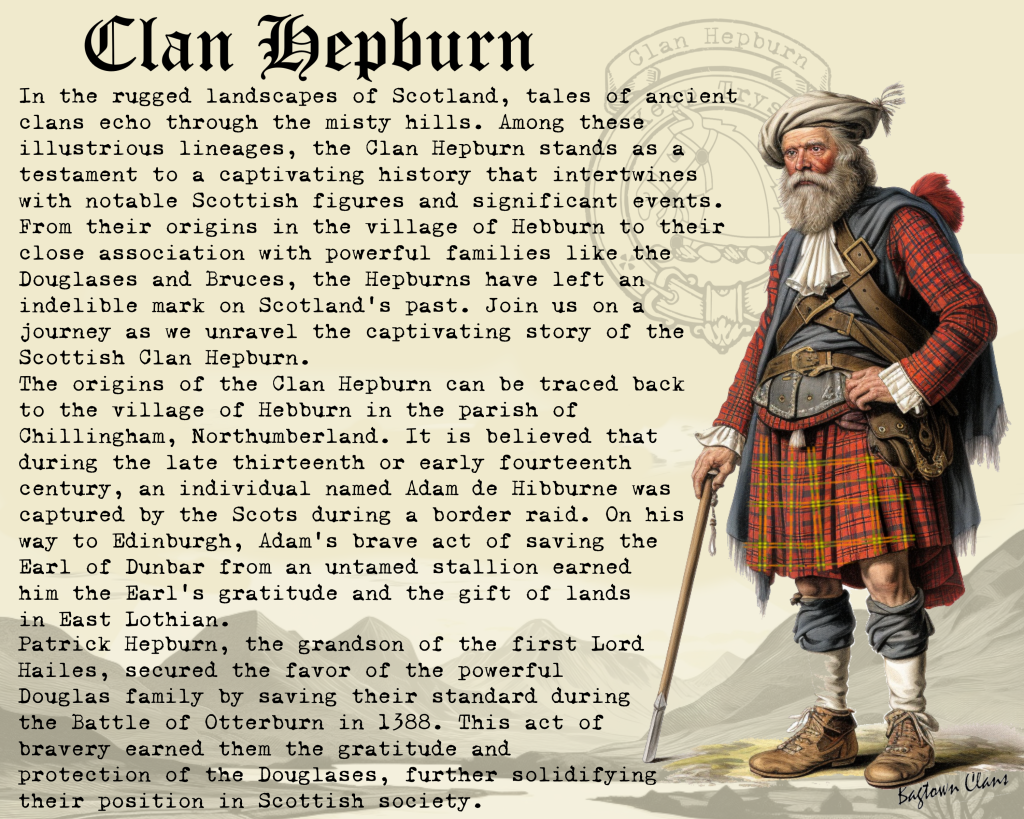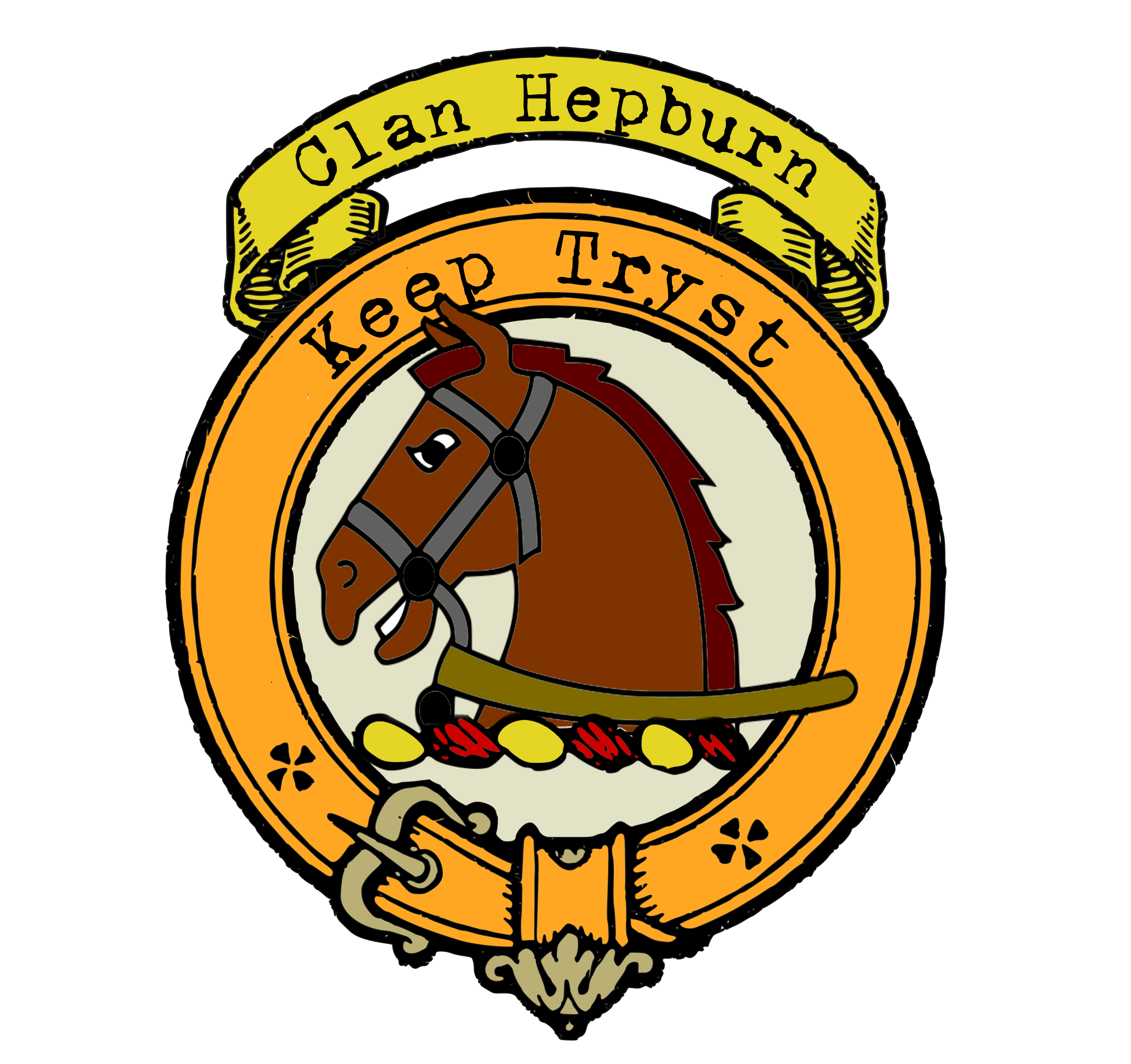Hepburn Clan
|
|
CREST: A horse’s head couped Argent, bridled Gules MOTTO: Keep tryst TRANSLATION: Meet as agreed VARIATIONS: N/A |
| In the rugged landscapes of Scotland, tales of ancient clans echo through the misty hills. Among these illustrious lineages, the Clan Hepburn stands as a testament to a captivating history that intertwines with notable Scottish figures and significant events. From their origins in the village of Hebburn to their close association with powerful families like the Douglases and Bruces, the Hepburns have left an indelible mark on Scotland’s past. Join us on a journey as we unravel the captivating story of the Scottish Clan Hepburn.
The origins of the Clan Hepburn can be traced back to the village of Hebburn in the parish of Chillingham, Northumberland. It is believed that during the late thirteenth or early fourteenth century, an individual named Adam de Hibburne was captured by the Scots during a border raid. On his way to Edinburgh, Adam’s brave act of saving the Earl of Dunbar from an untamed stallion earned him the Earl’s gratitude and the gift of lands in East Lothian. The Hepburns’ fortunes continued to soar as they cemented alliances with influential families. Patrick Hepburn, the grandson of the first Lord Hailes, secured the favor of the powerful Douglas family by saving their standard during the Battle of Otterburn in 1388. This act of bravery earned them the gratitude and protection of the Douglases, further solidifying their position in Scottish society. The Hepburns’ prestige reached new heights when Patrick Hepburn, the grandson of the first Lord Hailes, was created the Earl of Bothwell by James IV. This bestowed upon him numerous titles and positions of power, including High Admiral of Scotland, Keeper of the King’s Household, and Lord of Orkney. His close ties to the Scottish monarchy were evident when he stood proxy for the king at his marriage to Margaret Tudor, daughter of Henry VII of England. This union would eventually lead to James VI’s ascension to the English throne. The Hepburns faced their fair share of challenges and turbulent times. The Battle of Flodden in 1513 claimed the lives of many Scottish nobles, including Patrick Hepburn and his son Adam. Political unrest during the reign of James V led to exile for Patrick, the third Earl of Bothwell. However, he returned to Scotland after the king’s death and found himself embroiled in a web of political intrigue, attempting to win the affections of Mary of Guise, the king’s widow and mother of Mary, Queen of Scots. The most infamous chapter in the Hepburn saga revolves around James Hepburn, the fourth Earl of Bothwell. Accused of the murder of Lord Darnley, the second husband of Mary, Queen of Scots, Bothwell married the queen amidst controversy and public outrage. However, their tumultuous union did not stand the test of time, leading to Mary’s captivity in England and, ultimately, her execution. Beyond their association with royal and political figures, the Hepburns boasted remarkable individuals within their own ranks. Sir John Hepburn distinguished himself as a marshal of France and became the first colonel of the Royal Scots Regiment. Their contributions to military history and international diplomacy further solidified the clan’s legacy. |
|
Citations:
|
|


